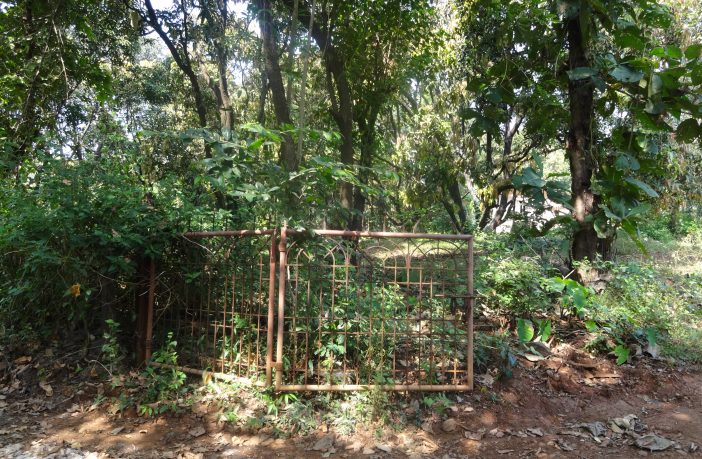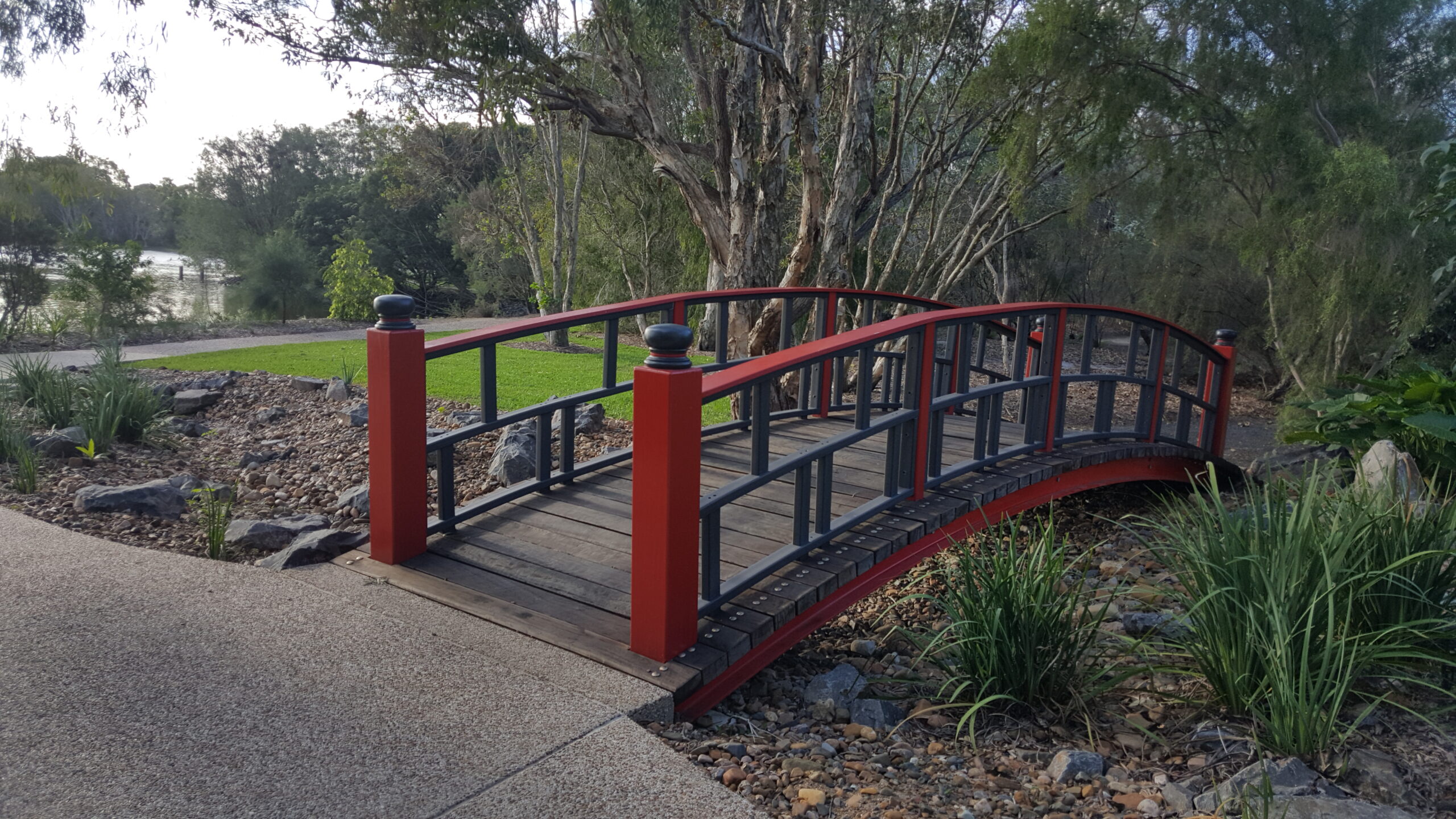The October heat can be sapping so we, my husband and I, took a break from the farm tour and ambled along the cooler section of the Krishivan property. We walked along a little wooden bridge built over the river that runs through the property. The river takes along its course some of the rich soil, leaving behind pebbles and rocks. The owner, therefore, has built dam-like blocks over the river to avoid the sifting of good soil. Such a good idea!
Having the burden of farm maintenance, Sachin had to gain revenue in the form of its produce. Hence he started a vegetative patch to generate revenue.
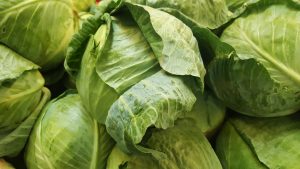
Cabbage harvest
He grew rows of vegetation interspersed with marigold flowers, cabbage and sugarcane. He planted the cabbage in such a way that it would take 60 days to grow until ready to be harvested. The cabbage served as a crop for consumption and when their need was met, the rest of it was allowed to stay as mulch. Mulch would decompose and thereby get converted into nutrition.
The sugarcane was planted just a month prior to the cabbage and was still in its early stages of growth. And as it was expected to grow to its full capacity in the month of May, the pool water would be utilised for the sugarcane plantation. By what technique would they have got the pool water to irrigate the sugarcane? Siphon technique! This technique served as the only way to going about watering without the use of energy! Due to the gravity difference the water would flow automatically. This technique avoided dependence on pumps.
By the way, what is termed as a pool is in fact a large tank much in need of cleaning. We actually saw a dead rat in the tank. The sight of a rat wouldn’t get me into the pool even if there was a greyhound behind me. I have no intention to scare you away but well, facts are facts. As I earlier said, this place comes with minimal frills and serves as a quiet retreat only. No swimming pool or benefits that other touristy hotels offer.
Coming to the sugarcane plantation, the water requirement for its growth is low owing to the infant stage of its growth. In the final four to five months when the sugarcane requires much more water for sustenance, the heavy rainfall in the Konkan region comes to the rescue.
Now, the owner had 500 plants of sugarcane which would at least give him 10 kilos of sugarcane. That works out to a total of 5 tons of sugarcane. If out of 5 tons of sugarcane, he converted it into jaggery, he would be left with 500 kilos of it! What would that equate to in terms of income? If he sold the jaggery at a wholesale rate of say Rs 30/kilo, it would generate INR 1.5L annually. Of course, the wholesale rates had to be kept competitive with the retail rates @ Rs 40/kilo. All this from a plot of merely 50×50 feet. Can you imagine the revenue if 1,000 plants of sugarcane were grown?! That too, in addition to other crops generating revenue.
After the sugarcane, we came to the creepers section. A tiny section. Am sure you will know that when creepers grow, they develop tendrils that attach themselves to a support. These tendrils are not straight – like threads – but curvy and wrap themselves to hold on firmly. So firm that even with heavy winds the tendrils will maintain strong flexibility & resistance. Engineering dynamics again.
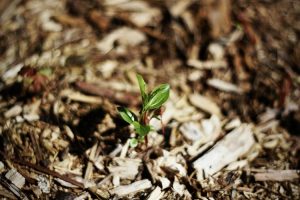
Mulch
As I indicated above, the residue of cabbage plants is used as mulch. What then is mulching? Mulching is a process of “covering” the ground with a kind of material, green or dry. This “covering” reduces the evaporation of water. In short, it creates a moist environment at the place where the mulching happens. Moisture, as you know, is a benefit to plant growth.
More scientific reasoning. While watering the plantation, they mix a little portion of ‘Jiv Amrut’ on a fortnightly basis. Jiv amrut is nothing but a microbial mixture activating the entire activity. They use a large number of earthworms too, to improve the quality of fertiliser. How do earthworms contribute to this activity? Say, an earthworm weighing 10gm consumes approximately 30gm of waste material in a day. if there are thousands of earthworms, it would eat 30 times the quantity of waste. This waste converts into ‘humus’ which is nothing but vermicompost. Imagine the amount of vermicompost generated by thousands of earthworms. This vermicompost is but a fertiliser which plants require to grow well. The humus improves the soil’s water-holding capacity and is rich in micronutrients. Just like water is important to us, it is important to plants as well. Did you see the conversion from earthworms to micronutrients? If you didn’t see it, do read this paragraph again.
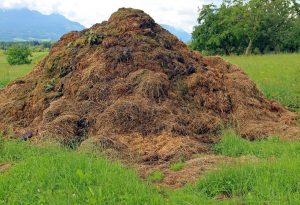
Dung
Another vital microbial fertiliser comes in the form of dung. According to a report by the Institute of Virology in Pune, cow dung has a negligible amount of pathogens. What are pathogens? They are nothing but disease-causing germs. Compared to buffalo dung, horse dung and even sheep’s cow dung had the least amount of pathogens. This is why buffalo dung is never utilized in cleaning houses in the country. If one were to count it, a kilo of cow dung would have multiple crores of microbes. When a cow litters, these microbes fall on the ground. With the help of the rain, the microbes get spread into the soil. What then is the role of these microbes? They convert dead matter into nutrition which the plant absorbs. So you now know that plant survival is based on the microbes and our survival, in turn, is based on these plants. Hence we come to the conclusion that our feeding organisms lie not in these plants but in the microorganisms. Did you get that bit? How intriguing!
Let’s break down this explanation in using an example. If you sprinkle salt on a vegetable, say cucumber, or marinate a chicken – what happens? It releases a lot of water. This is nothing but osmosis. Salt tries to enter the body and water is extracted. Similarly, when chemical fertilisers are used, they suck out the water from the microbes as chemical fertiliser is nothing but a form of salt. When water is sucked out, the microbes die. Ultimately the carriers of nutrition are not available and that is why we get plants that look healthy but have little nutritional value. Interesting.
If you have ever seen a bag of urea you will note that it has a label on it – 46 per cent N – which is 46% of Nitrogen. Then what comprises the remaining 54%? More than 54% in a bag is what the farmer doesn’t need. No wonder then that there’s a market for organic vegetables and fruits as half of what goes into inorganic plantation is what we don’t need!.
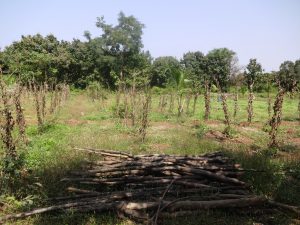
Vegetative patch
We learnt so much about plantations and its maintenance that it was hard to remember everything. That is why we were relieved to return to our hut to mull over all that we had learnt. To jot it down on paper to be able to convert it into a blog post later. A wealth of information really.
 A shower later, we gladly trudged towards the dining area to indulge in their kombdi kadi (chicken curry), prawn masala, “pamplet” fry (fried pomfret) and green salad picked fresh from the farm.
A shower later, we gladly trudged towards the dining area to indulge in their kombdi kadi (chicken curry), prawn masala, “pamplet” fry (fried pomfret) and green salad picked fresh from the farm.
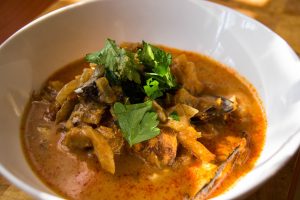
Kombi chi kadi
More about what followed in the night will follow in the next blog post on Krishivan.
In the footer of this blog post is a link to the farm’s website which will tell you all that you need to know in terms of its features so as to allow me to dwell solely on its finer attributes.
Log on to www.krishivan.com to glance through its gallery, features and amenities.


